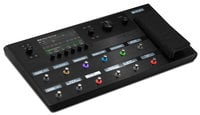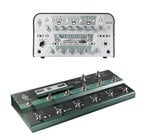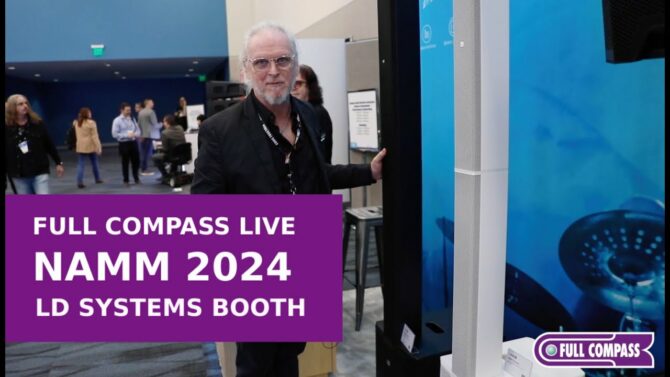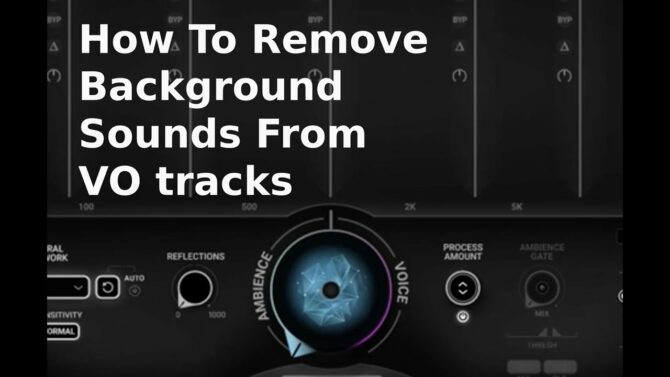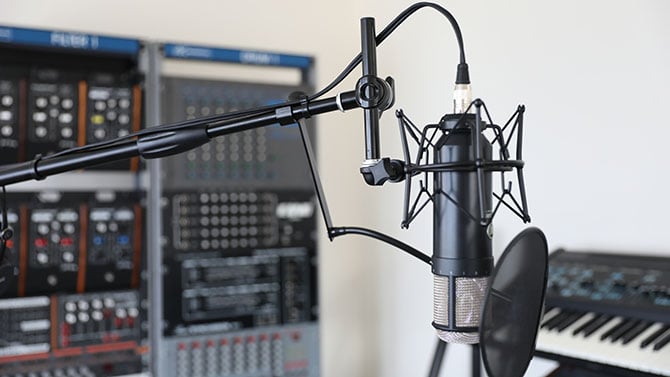Guitarists live for tone, and aside from being able to play the ultimate killer guitar of all time, guitar players have pretty much the same wish list:
- Acquire a collection of amps that can provide all the sounds you could ever want
- Obtain the sound of cranked amps at low volumes
- Use tubes that never deteriorate, and never need replacing
- Have the effects needed for “produced” guitar sounds
One solution, guitar amp Definition:
Definition:
Abbreviation for either Ampere or Amplifier. modeling, has been around for over two decades. Initially, many guitarists were impressed by the convenience and ability to create different sounds, but found the sound quality and “feel” lacking when compared to physical guitar amps. Over the years, though, modeling has improved dramatically—to the point where even “tone snob” guitarists have added modeling to their arsenal of sounds. Floor multi-effects like the Line 6 Helix and HeadRush, amps like Marshall’s M-Code, and software programs such as IK Multimedia’s AmpliTube and Positive Grid’s BIAS FX Pro have raised the bar for modeling. But that’s not the only option: meet amp profiling, the ground-breaking technology used in Kemper’s line of amp preamp heads and head+power amps.
The Kemper Profiling Head (we’ll call it KPH for short), the subject of this review, captures an amp’s signature sound with exceptional accuracy, and furthermore, operates standalone so it doesn’t require a computer for basic operation. However, it can also take advantage of its USB Definition:
Definition:
(Universal Serial Bus) A standard, bi-directional serial connection between computers and peripheral devices. interface Definition:
Definition:
A device that adds I/O capability to another device. Common would be a MIDI, audio or video interface for a computer. for updates and managing your setups with the free, cross-platform Rig Manager software.
ABOUT THE TECHNOLOGY
Profiling an amp is kind of like capturing an amp’s “soul.” The basic procedure is you mic an amp, and the mic’s output feeds the Kemper. You then patch a cable from the Kemper’s direct out Definition:
Definition:
1. A feature on some mixers that taps the signal from a specific channel, and bypasses the mix bus. 2. A signal processor output that carries the dry (unprocessed) signal prior to going into the processor. to the amp’s input jack Definition:
Definition:
A connector, normally female, that works in conjunction wit a plug. Usually located in a piece of equipment, or as part of a cable., listen to what the amp sounds like through the mic, and when it sounds as desired, start the profiling process. This sends a series of tones of different frequencies and amplitudes through the amp to create a “profile” of how the amp reacts to signals appearing at the input. The Kemper then creates a profile of the amp that defines how it responds to your amp’s dynamics Definition:
Definition:
In a musical performance, changes in overall volume levels, often accompanied by timbral changes. Example: Classical symphonic music has a wide dynamic range, while dance mixes have a much narrower dynamic range., tonal qualities, and distortion—it’s not just a “snapshot” of a sound, like sampling would be.
Of course, the profile’s quality of the depends on the amp, and how well you mic it. The KPH doesn’t have phantom power Definition:
Definition:
A source of power for a microphone (usually condenser) that travels to the microphone over the microphone's cable. There are different voltage standards and requirements for different microphones, but the most common standard is 48 Volts. It derives its name because there is no visible power cable., so for condenser Definition:
Definition:
An archaic term for Capacitor. mics you’ll need an external mic preamp; however, the “go-to” amp mic for many engineers is the venerable Shure SM57, a dynamic mic that doesn’t require phantom power anyway. Remember, though, amp miking involves not just the amp itself, but where it’s placed in the room, the mic, mic placement, and more. Fortunately, for those guitarists who find the process daunting, there are countless “rigs” available with profiled amps. This includes free downloads from the Kemper site and others, as well as commercially available ones—so you have access to tons of profiled amps and rigs.
None of this technology would be meaningful if the process didn’t deliver, but it captures amp nuances to a degree that frankly, I wouldn’t have expected without experiencing it myself. And I’m not alone; guitarists will tell you that playing through the Kemper not only sounds like playing through an amp, it responds like playing through an amp.
THE PROFILING HEAD
The core of the KPH is a “virtual stack” with amp, EQ, and cabinet modules (Fig. 1).

Four pre-stack slots (Fig. 2) can draw from a rich roster of effects, including the expected (delay Definition:
Definition:
A device that outputs and input signal some time later. This can be short for echo effects, longer for matching speaker stacks, or aligning sound and video., modulation Definition:
Definition:
The process of one signal influencing a different signal, in real time. This can occur with radio frequencies (e.g., using audio to modulate a radio frequency carrier signal), audio frequencies (see: FM Synthesis and Ring Modulation), or sub-audio signals (see: LFO)., reverb Definition:
Definition:
Short for Reverberation. The myriad echoes of decaying amplitude created in an acoustic environment. Reverberation may be simulated electronically, mechanically using springs or a metal plate, or in a specially built physical chamber with reflective surfaces where a speaker sends audio into the chamber, and a microphone picks up the reflections., dynamics, pitch-shifting, wah, etc.) as well as the unusual (e.g., waveshaper and various lo-fi options). In addition, two post-stack slots choose from the same effects options, followed by two more slots dedicated Definition:
Definition:
Designed or used to do a specific task or set of tasks. to delay and reverb. So the KPH isn’t just about an amp, but can offer a “produced” sound that incorporates the amp.

The user interface may seem daunting at first, but start with the Basics manual (I know, you don’t read manuals...make an exception in this case), and it will make sense. Navigation is logical, and the LCD Definition:
Definition:
LCD (Liquid Crystal Display): A display that uses fluid crystals that can block, reflect, or transmit light from a back illuminator, and uses very little power. uses eight different colors to help differentiate among effects families. There’s considerable flexibility, but onstage, you can restrict yourself to adjusting a few crucial parameters (like the tone controls). The LCD itself is helpful in navigating your way through the KPH (Fig. 3)

In terms of extras, there are plenty of audio ins and outs, as well as digital Definition:
Definition:
A signal or data expressed as series of the digits 0 and 1, typically represented by values of a physical quantity such as voltage or magnetic polarization. connections (Fig. 4). The KPH is eminently suitable for live and studio use.

Note the MIDI Definition:
Definition:
(Musical Instrument Digital Interface) A hardware/software standard for communication of musical data digitally among electronic instruments, effects, and computers. However it is also used for to control lighting, pyrotechnics, theatrical displays, and mechanical devices. For example, the fountains at the Bellagio in Las Vegas is controlled by MIDI. Also called MIDI 1.0. I/O—excellent for either MIDI footswitches, like Kemper’s sophisticated Remote Definition:
Definition:
A broadcast from the field, not from the studio. A Remote Control. footswitch (typically bundled with the KPH, and which adds about $470 to the base price), or control for live use from computer-based, programmed changes. The expression pedal jack works with several pedals, but Mission Engineering’s EP1-KP (available in black or green) is designed specifically for the Kemper Profiler.
PROFILING
The profiling process is easier than you might think. After setup, the KPA sends a combination of noise and tones into the amp, and then analyzes the “data” to define the amp’s sonic signature and create the profile. It’s amazing how close this can come to the original, although the emulation’s accuracy depends on the care with which you mic the amp. There’s also a secondary stage where playing briefly refines the sound further.
You can mix and match cabinets and amps—they aren’t permanently “wedded” to each other. Furthermore, if you want to play through a guitar cabinet, CabDriver mode retains the response of the amp and how it responds with a cabinet, but lets you feed a physical cabinet. This can supplement the complete, profiled sound that drives a powered monitor Definition:
Definition:
See: Powered Loudspeaker, Active Loudspeaker. or flat Definition:
Definition:
1. A frequency response curve that looks like a flat line because the response is even throughout the audio spectrum. 2. A scenic element like a wall or door. 3. A musical note that is lower in pitch than the note's standard frequency. See also: Sharp. response/full range speaker system. So, the profiled sound can go to the front of house, while you can have the amp sound onstage to allow for feedback Definition:
Definition:
1. A squealing, chirping, or ringing sound when a microphone feeding a loudspeaker picks up audio from that loudspeaker. Also called howlround. 2. The state where a device's output connects back to the input. and other effects that work best with a physical amp. Pretty cool. The Profiler Powerhead, described later, takes this concept further.
AMPLIFYING THE KPA
The profiling mojo that analyzes an amp reproduces the amp’s “touch” to an uncannily accurate degree. The hardest task for any amp based on digital technology is nailing the breakup from clean to distorted as a smooth continuum, and that’s the strongest aspect of what the Kemper delivers. As a result, because the KPA can replicate the entire signal chain for an amp and effects, going through a guitar amp is kind of redundant. An FRFR (Flat Range, Full Response) amp like a powered monitor is ideal, and usually, more portable than a guitar amp. It will also offer more options such as pole mounting, daisy-chaining for additional coverage Definition:
Definition:
In film making, additional footage shot from additional cameras that's useful for editing and backup., and the option for a sub-woofer Definition:
Definition:
A low-frequency driver or speaker. (yes, the KPA is bass player-friendly, too). For more about FRFR amps, please see my article Will Your Next Guitar Amp Be FRFR?
However, note that Kemper has branched out from the original KPH to create the Kemper Profiler Powerhead, which incorporates a 600W, Class D amp. You can run this into a conventional guitar cabinet, send a direct out to the front of house mixer or an FRFR, or both.
IS THERE A DOWNSIDE?
There’s a boot Definition:
Definition:
Short for Bootstrap Loading. To boot a computer means to start it up ,and place its operations under control of the operating system. time of about 45 seconds, so I’d recommend an uninterruptible power supply Definition:
Definition:
A device (internal or external to another device) that provides power for active circuitry. Can be AC, DC or battery-powered. for live use if a venue’s power is questionable (which of course, never happens in real life!). The only other downside, if you can call it that, is the learning curve—obviously, you have a lot more options than just plugging into a Fender Twin and turning up the gain Definition:
Definition:
The amount of amplification provided by an amplifier circuit, expressed in dB or numerically as in "3X" = "3 times".. However, once everything is set to your liking, it’s easy enough to step through presets and take it easy. Furthermore, the documentation is well-written, and the unit uses color-coding intelligently for functions like browsing and identifying effects. There are many, many useful nuances and shortcuts built into the KPH’s operating system—way too many to cover in this review. Fortunately, you can download Definition:
Definition:
To receive data at one computer from another source (computer, electronic mail service, the cloud, etc.) three multi-lingual manuals (basics, main, and profiling) from the Kemper site. Perusing these is the best way to understand the full functionality built into the KPH.
Finally, be aware that profiling is a combination of art and science. The Profiler faithfully reproduces what you send into it, so if you mic up a good amp properly, you’ll get good results. Note that the profiler is mono Definition:
Definition:
Short for Monophonic. An audio program, recording, or hardware device/software routine that produces or processes a signal with only one channel. (almost all amps are anyway), and it’s best to do profiling without effects that could confuse the process. Besides, the Kemper comes with plenty of cool effects you that may like even better than what you’re using now.
BUT WAIT, THERE’S MORE!
An entire cottage industry has evolved around the Kemper, including Rig Packs and Profiles from STL Tones, Michael Britt, Mats Nermark (free, but donations encouraged to fund further development), and the mother lode of free profiles/rigs—the Kemper forums. Fortunately, it’s possible to flag favorites in the KPH so you can build up your own “greatest hits.”
SO DOES IT REPLACE AMP SIMS?
That’s like asking if samplers replace synthesizers, or convolution reverbs replace algorithm-based reverbs. They’re different animals. The Kemper can’t get “inside” the amp, any more than you can with a physical tube Definition:
Definition:
(slang) A vacuum tube or (valve), an electronic amplifying or rectifying element with a heating filament, in a glass or metal envelope. amp. Its mission is to nail the amp’s sound and character, and although some might still prefer the feel of blasting air through a physical amp, there’s no question that the Kemper succeeds at its mission. I recently visited one prominent (and very successful) heavy metal producer, who was selling his amps—because he’d profiled them, and neither he, nor the artists he produced, could hear any significant difference on playback between the “real thing” and the profiled versions.
Amp sims are more flexible, in the sense that you can change the amp’s characteristics, sometimes with exceptional detail (e.g., AMR’s ReValver, which can modify the amp’s virtual circuit on the component level). If you don’t like the fundamental sound of a particular rig, there’s not much you can do about it—but with such a huge variety of rigs available, it’s almost certain you’ll be able to find the amp sound you want.
Also note that for 21st-century re-amping, the Kemper can replace amp sims in DAWs because as long as you have an audio interface Definition:
Definition:
A device to convert audio signals into digital code suitable for use by a computer; typically communication occurs through a port such as USB, Thunderbolt, FireWire, etc. with enough inputs and outputs, you can run a track output to the Kemper, process it, and then feed it back into a spare audio input. Although you’ll experience the latency Definition:
Definition:
The amount of delay a signal, data, sound, video, or control signal acquires within a device, system, or long-distance connection. involved in going out the interface and back in again, with Thunderbolt Definition:
Definition:
A computer interface port or cable that multiplexes PCIe and DisplayPort data lines into two serial signals (along with DC power), which is then demultiplexed into separate PCIe and DisplayPort ports by the Thunderbolt controllers at receiving devices. this is negligible and even with USB 2.0 Definition:
Definition:
Stereo sound with 2 speakers and no subwoofer., probably won’t be an issue. If it is, you can line up the processed track with the original track by “nudging” the processed track forward in time a bit. Using the Kemper gives a whole new meaning to the concept of re-amping.
ABOUT THE GUITARIST’S WISH LIST…
The Kemper is one of those products that when first introduced, seemed almost too good to be true. Yet over the past several years, it has proven itself as the breakthrough it promised to be. In some ways, it under promises and overdelivers. For example, I have some software amp sims that I spent a considerable amount of time refining, and are keyed to particular programs. The Kemper made it possible to profile them, and the proof was in the listening—part of the profiling process is A-Bing between the reference amp and the profile. I was sure I hadn’t corrected everything properly, because the sound was identical. But everything had been connected properly.
After the Kemper was introduced, a few software companies stepped into the profiling arena, with encouraging results. However, there still isn’t anything that combines profiling, effects, stage-friendly operation, and tons of connectivity, then wraps that up in a sturdy hardware unit you would feel equally at home using at a gig as in your studio.
Perhaps most significantly, Kemper’s products continue to be updated. When I first reviewed the Kemper, it lacked many of the features it has now; but over time, it has proven to be true platform. At Winter NAMM Definition:
Definition:
NAMM (National Association of Music Merchants): A professional, not-for-profit trade organization that promotes the benefits of music-making. NAMM also refers to the twice-yearly trade shows the revolve around music dealers, manufacturers, and educators. 2019, Kemper previewed the next operating system (with a new UI and two new reverbs), the software-based Profiler Editor, and showed their Kemper Kabinet, which provides the characteristics of 16 speakers in a single cabinet.
And about that wish list... yes, the Kemper checks all those boxes.




